#Peer-Reviewed Computer Science Journal
Explore tagged Tumblr posts
Text

The Indian Journal of Computer Science and Technology (INDJCST) is a peer-reviewed academic journal that delivers cutting-edge research and advancements in computer science to scientists, engineers, and technology professionals.
It highlights the latest findings across four key domains: computing (including theory, scientific, cloud, and high-performance computing), systems (such as database, real-time, and operating systems), intelligence (covering robotics, bioinformatics, and artificial intelligence), and applications (encompassing security, networking, software engineering, and more).
#Peer-Reviewed Computer Science Journal#Scholarly Computer Science Research#Latest Developments in Computer Science#Computing Theory and Applications#Scientific Computing Journal#Cloud Computing Research#High-Performance Computing Studies#Database Systems Research
0 notes
Text
For those who don't know, scientists have to pay academic journals to publish their data. This led to the existence of predatory journals, which usually have little to no peer review process and will publish just about anything to collect publication fees. Notably, they also harass you with spam emails trying to get you to publish with them. I brought up the spam emails to my advisor today, and he told me about perhaps the greatest response to predatory journals of all time. David Mazières and Eddie Kohler published the following article in the International Journal of Advanced Computer Technology:
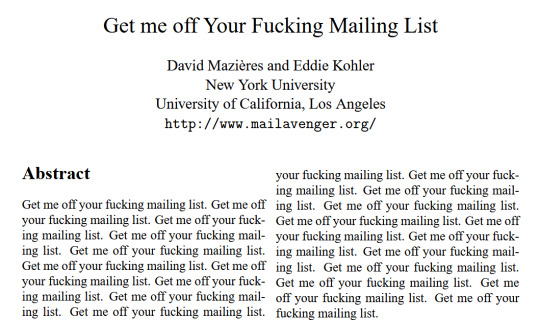
It even has a figure!
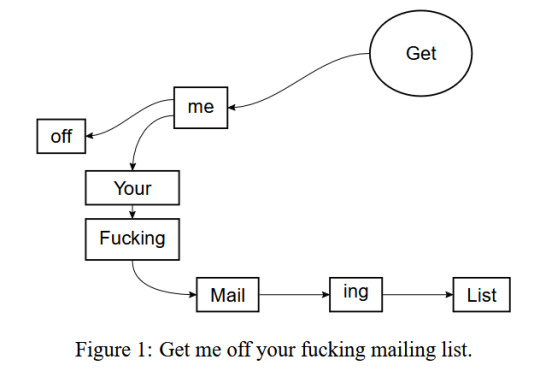
They paid actual money to have this published just for the bit. I live for this kind of petty science drama
44 notes
·
View notes
Text
After 4 years of work, I've finally published my very first peer-reviewed theory paper: Design rules for controlling active topological defects
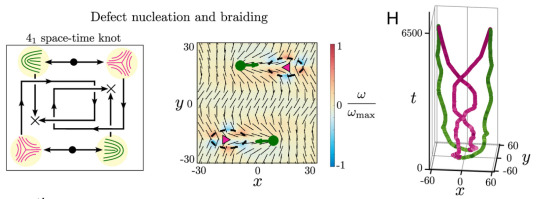
(and it's open access! :D)
I am sooo excited to finally be able to share this! I'll probably write some more in the future about what it was like to work on this project, but for now here's what I want to say about it:
I think this work is a beautiful example of how the long, meandering paths of curiosity-driven research can bring us in completely unexpected directions, yielding new ideas and technologies that might never have been found by problem- or profit-driven research.
We started this project because we were interested in the fundamental physics of active topological defects; we wanted to understand and develop a theory to explain their effective properties, interactions, and collective behaviors when they're hosted by a material whose activity is not constant throughout space and time.
Along the way, we accidentally stumbled into a completely new technique for controlling the flow of active 2D nematic fluids, by using symmetry principles to design activity patterns that can induce self-propulsion or rotation of defect cores. This ended up being such a big deal that we made it the focus of the paper, for a few reasons:
Topological defects represent a natural way to have discrete information in a continuous medium, so if we wanted to make a soft material capable of doing logical operations like a computer, controlling active defects might be a really good way of putting that together.
There have also been a number of biological systems that have been shown to have the symmetries of active nematics, with experiments showing that topological defects might play important roles in biological processes, like morphogenesis or cell extrusion in epithelia. If we could control these defects, we'd have unprecedented control over the biological processes themselves.
Right now the technique has only been demonstrated in simulations, but there are a number of experimental groups who are working on the kinds of materials that we might be able to try this in, so hopefully I'll get to see experimental verification someday soon!
#physics#soft matter#materials science#science#academia#mathematics#topology#biology#biotechnology#tech#publishing#196
79 notes
·
View notes
Text
344 days. That’s how long I served as Chief of the Autism, ADHD, and Externalizing Disorders Interventions Research Program at NIMH before being illegally terminated—just 21 days before completing my probationary period.
On Friday, I was told to expect a termination letter at 4 PM, after which my access to government systems and email would be immediately cut off. I was warned to download it immediately, because I would need it to file for unemployment before losing access.
I spent Valentine’s Day glued to my computer. 4 PM came. Then 5. Then 9. Nothing.
Finally, at 4:54 PM on Saturday, it came.
"Unfortunately, the Agency finds that you are not fit for continued employment because your ability, knowledge, and skills do not fit the Agency’s current needs, and your performance has not been adequate to justify further employment at the Agency."
This—despite a stellar performance review weeks ago.
This—despite receiving an NIMH Director’s Award.
This—despite being recruited SPECIFICALLY for my subject matter expertise in autism and neurodevelopmental disabilities, clinical trials, and community-based effectiveness research.
After two decades in academic research and advocacy, I was hired to help develop ways to get low-cost, evidence-based mental health care into schools and community settings—so ALL kids could access specialized treatment, not just those with private insurance or parents who could take time off work.
When I left Children’s National, I left behind:
- A tenured associate professor career
- Five active large-scale grants
- 40+ peer-reviewed publications
- A school-based EF curricula I ran through two clinical trials, now used in 15+ districts
- A journal editor position
- A community of the best, most brilliant, selfless colleagues and friends I deeply respect
Life as a woman in science and academia is brutal, but I was part of a mission-driven community—one that fights for fundamental human rights and values differences as assets, not liabilities.
I didn’t take the move to NIMH lightly—I went because I believed in shaping the future of autism and mental health research, impacting policy, and ensuring that science actually reaches the communities that need it most. And I LOVED my job. I found that same community in my division.
Because at the end of the day - EVERY child deserves access to mental health care.
Not just those who can afford it.
Not just those in the "right" zip code.
Not just those who fit neatly into a system built for a select few.
Reaching out with condolences is fine, but we need urgent action. Even if things are not affecting you NOW, I need you to fight for the fundamental human rights of others.
🔹 Call your representatives. Demand accountability. Speak out.
🔹 Download the 5calls.org app. Make your voice heard every day.
🔹Speak out against the injustice of everyone who lost - and will lose - their livelihoods and passions trying to serve others.
19 notes
·
View notes
Text
Thursday is work-from-home day! Time to destroy this to-do list.
I'm just going to reproduce yesterday's list, since that should be helpful:
Send my forest service colleague the financial info he's been waiting so patiently to get from me. This will involve coordinating with our terribly understaffed grants team and may involve me writing a few pages of justifications, so I'm anticipating this one will take a few hours.
This one was tough, but after quick call to him and many texts back and forth, I think I've got everything finished and sent to my grants team!
Write letters of support for my PhD student. These are a joy to write and shouldn't take too long.
These really were fun to write - I can't say enough good things about this student, so it's fun to get to do that in a formal statement that will have a measurable impact on his career.
Provide comments to the postdoc out in Switzerland about her proposal. It's not a super long proposal, but it looked a little rough the last time I saw it, so I'm steeling myself for what may be a long read.
It's actually looking considerably better than I remembered! I get through pretty quickly and remind her to cover a couple comments she missed last time around.
Decide whether I want to submit an abstract to a conference that'll be happening in June. It's not needed for me, but it's close by, a good friend is running it, it looks relevant, and I have some travel funds that will be deleted if they're not used by November. If I decide to go for it, writing the abstract won't take long at all.
I've decided against this for all sorts of practical reasons, but also because I'd like to hang on to some of that funding in case my PhD student needs to stay on as a postdoc for a month or two.
There's a questionnaire asking how my research would be impacted by various political things going on, so I need to fill that one out.
I passed on this for now.
I have a peer review for a scientific journal due on Monday that I've already delayed once - I simply gotta write it. I'm good friends with the editor, so I want to help him get that off his to-do list as well.
Nope, this one's moving to Friday.
There's some required grants training that expires after four years, so I guess it's time for me to do that again.
This was basically 10 minutes (on 2x speed, amazing). Phew.
There's a possibility of applying for a major grant with a friend in the computer science department. I don't know if either of us can put this on our plates, but we should at least chat about it quickly.
Reply to my absentee finishing-remotely-while-starting-a-new-job-but-has-been-incommunicado Master's student who reached out yesterday for the first time in three years.
Work on revisions to a grant proposal - I promised my co-author that we'd have the proposal draft ready to go by Feb. 7.
Work on revisions to the review article I have to cut down by about 5,000 words.
Moving these four to next week!
The reason why I had to move so much? Just SO much annoying grants stuff. It looks like the formatting of our documents was incorrect in a couple of new and exciting ways and things didn't get submitted the way they should, who knows why. Anyway, got it resolved (I think?) after six million frustrating e-mails and going to chip away at my inbox while eating a very late lunch, then start laundry.
My mood is immediately improved by some job-related news that is deeply validating. Phew. And I get to spend some time in the evening pricing cards for Sunday's show!
Tomorrow: a class, a couple meetings, hopefully some of that paper review (realistically it'll get done on Monday)... and then D&D and the weekend!
12 notes
·
View notes
Text
by Nicolas Hulscher, MPH
The study titled, Vaccination and Neurodevelopmental Disorders: A Study of Nine-Year-Old Children Enrolled in Medicaid, was just published after successful peer-review in the journal Science, Public Health Policy and the Law:
Background: Vaccinations required for school attendance have increased nearly threefold since the 1950s, now targeting 17 infectious diseases. However, the impact of the expanded schedule on children’s overall health remains uncertain. Preliminary studies comparing vaccinated and unvaccinated children have reported that the vaccinated are significantly more likely than the unvaccinated to be diagnosed with bacterial infections, allergies, and neurodevelopmental disorders (NDDs). The objective of this study was to determine the association between vaccination and NDDs in 9-year-old children enrolled in the Medicaid program. The specific aims were to test the hypothesis that: 1) vaccination is associated with autism spectrum disorder (ASD) and other NDDs; 2) preterm birth coupled with vaccination increases the odds of NDDs compared to preterm birth without vaccination; and 3) increasing numbers of vaccinations are associated with increased risks of ASD. Methods: The study population comprised children born and continuously enrolled in the Florida State Medicaid program from birth to age 9. Vaccination uptake was measured by numbers of healthcare visits that included vaccination-related procedures and diagnoses. Cross-sectional analyses were performed to calculate prevalence odds ratios (Aims 1-2). A retrospective cohort design was used to compute relative risks specifically of ASD (Aim 3).
7 notes
·
View notes
Text
This day in history
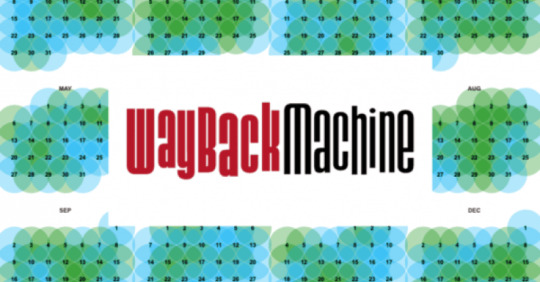
I'm in TARTU, ESTONIA! AI, copyright and creative workers' labor rights (TOMORROW, May 10, 8AM: Science Fiction Research Association talk, Institute of Foreign Languages and Cultures building, Lossi 3, lobby). A talk for hackers on seizing the means of computation (TOMORROW, May 10, 3PM, University of Tartu Delta Centre, Narva 18, room 1037).

#20yrsago Japan jails academic for writing P2P app https://web.archive.org/web/20040512194433/http://straitstimes.asia1.com.sg/latest/story/0,4390,250207,00.html
#20yrsago Blogger redesign notes https://stopdesign.com/journal/2004/05/09/blogger.html
#20yrsago TheyRule: applying information design to corporate directorships https://theyrule.net
#20yrsago Don’t just protect the unconceived: protect the inanimate! https://fafblog.blogspot.com/2004_05_02_fafblog_archive.html#108411098508640046
#15yrsago Brit MP saw undercover cops egging crowd to riot at G20 https://www.theguardian.com/politics/2009/may/10/g20-policing-agent-provacateurs
#15yrsago Elsevier has an entire division dedicated to publishing fake advertorial “peer-reviewed” journals https://science.slashdot.org/story/09/05/09/1514235/more-fake-journals-from-elsevier
#10yrsago Against the instrumental argument for surveillance https://www.theguardian.com/technology/blog/2014/may/09/cybersecurity-begins-with-integrity-not-surveillance
#10yrsago Congressmen ask ad companies to pretend SOPA is law, violate antitrust https://www.eff.org/deeplinks/2014/05/pols-ad-networks-pretend-we-passed-sopa-and-never-mind-about-antitrust
#10yrsago Japanese man arrested for 3D printing and firing guns https://kotaku.com/japanese-man-arrested-for-having-guns-made-with-a-3d-pr-1573358490
#5yrsago Americans with diabetes are forming caravans to buy Canadian insulin at 90% off https://www.cbc.ca/news/canada/nova-scotia/americans-diabetes-cross-canada-border-insulin-1.5125988
#5yrsago Big Tech is deleting evidence needed to prosecute war crimes, and governments want them to do more of it https://www.theatlantic.com/ideas/archive/2019/05/facebook-algorithms-are-making-it-harder/588931/
#5yrsago Buried in Uber’s IPO, an aggressive plan to destroy all public transit https://48hills.org/2019/05/ubers-plans-include-attacking-public-transit/
#1yrago KPMG audits the nursing homes it advises on how to beat audits https://pluralistic.net/2023/05/09/dingo-babysitter/#maybe-the-dingos-ate-your-nan
7 notes
·
View notes
Text




By: Aaron Sibarium
Published: Jan 30, 2024
It's not just Claudine Gay. Harvard University's chief diversity and inclusion officer, Sherri Ann Charleston, appears to have plagiarized extensively in her academic work, lifting large portions of text without quotation marks and even taking credit for a study done by another scholar—her own husband—according to a complaint filed with the university on Monday and a Washington Free Beacon analysis.
The complaint makes 40 allegations of plagiarism that span the entirety of Charleston's thin publication record. In her 2009 dissertation, submitted to the University of Michigan, Charleston quotes or paraphrases nearly a dozen scholars without proper attribution, the complaint alleges. And in her sole peer-reviewed journal article—coauthored with her husband, LaVar Charleston, in 2014—the couple recycle much of a 2012 study published by LaVar Charleston, the deputy vice chancellor for diversity and inclusion at the University of Wisconsin-Madison, framing the old material as new research.
Through that sleight of hand, Sherri Ann Charleston effectively took credit for her husband's work. The 2014 paper, which was also coauthored with Jerlando Jackson, now the dean of Michigan State University's College of Education, and appeared in the Journal of Negro Education, has the same methods, findings, and description of survey subjects as the 2012 study, which involved interviews with black computer science students and was first published by the Journal of Diversity in Higher Education.

The two papers even report identical interview responses from those students. The overlap suggests that the authors did not conduct new interviews for the 2014 study but instead relied on LaVar Charleston's interviews from 2012—a severe breach of research ethics, according to experts who reviewed the allegations.
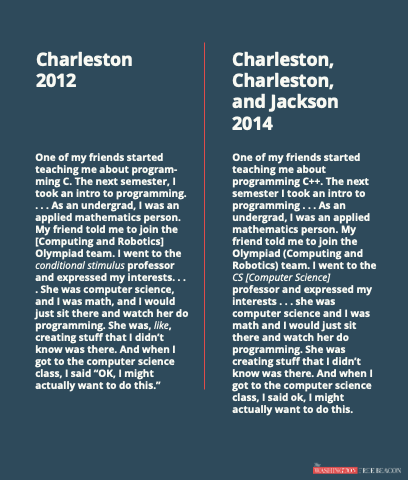
"The 2014 paper appears to be entirely counterfeit," said Peter Wood, the head of the National Association of Scholars and a former associate provost at Boston University, where he ran several academic integrity probes. "This is research fraud pure and simple."
Sherri Ann Charleston was the chief affirmative action officer at the University of Wisconsin-Madison before she joined Harvard in August 2020 as its first-ever chief diversity officer. In that capacity, Charleston served on the staff advisory committee that helped guide the university's presidential search process that resulted in the selection of former Harvard president Claudine Gay in December 2022, according to the Harvard Crimson.
A historian and attorney by training, Charleston has taught courses on gender studies at the University of Wisconsin, according to her Harvard bio, which describes her as "one of the nation's leading experts in diversity." The site says that her work involves "translating diversity and inclusion research into practice for students, staff, researchers, postdoctoral fellows and faculty of color."
Experts who reviewed the allegations against Charleston said that they ranged from minor plagiarism to possible data fraud and warrant an investigation. Some also argued that Charleston had committed a more serious scholarly sin than Gay, Harvard's former president, who resigned in January after she was accused of lifting long passages from other authors without proper attribution.
Papers that omit a few citations or quotation marks rarely receive more than a correction, experts said. But when scholars recycle large chunks of a previous study—especially its data or conclusions—without attribution, the duplicate paper is often retracted and can even violate copyright law.
That offense, known as duplicate publication, is typically a form of self-plagiarism in which authors republish old work in a bid to pad their résumés. Here, though, the duplicate paper added two new authors, Sherri Ann Charleston and Jerlando Jackson, who had no involvement in the original, letting them claim credit for the research and making them party to the con.
"Sherri Charleston appears to have used somebody else's research without proper attribution," said Steve McGuire, a former political theory professor at Villanova University, who reviewed both the 2012 and 2014 papers.
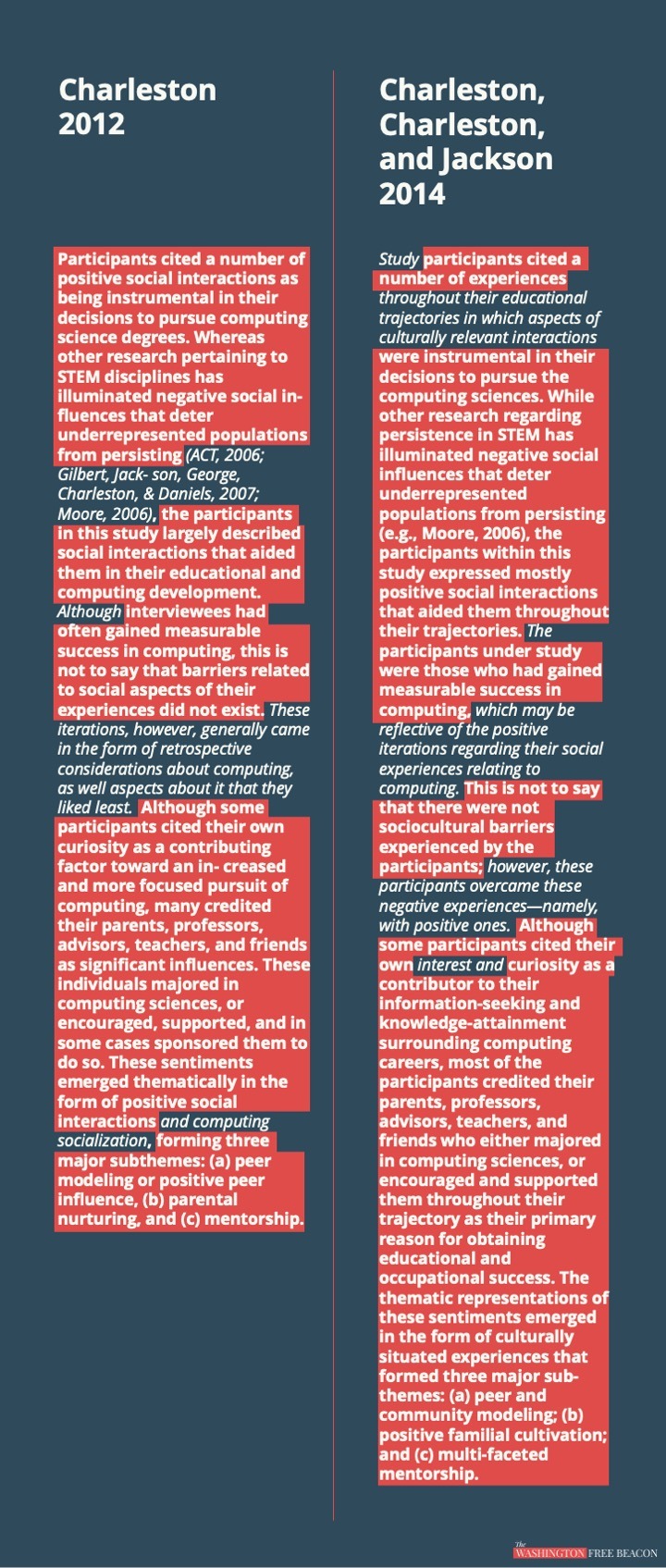
One-fifth of the 2014 paper, including two-thirds of its "findings" section, was published in the 2012 study, according to the complaint, and three interview responses are identical in both articles, suggesting they come from the same survey.
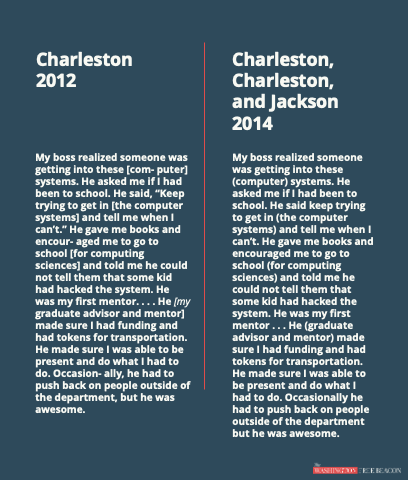
According to Lee Jussim, a social psychologist at Rutgers University, "it is essentially impossible for two different people in two different studies to produce the same quote." At best, he said, the authors got their wires crossed and mixed up interviews from two separate surveys, both of which just happened to involve 37 participants with the exact same demographic profile. At worst, the authors committed data fraud by framing old survey responses as new ones—a separate and more serious offense.
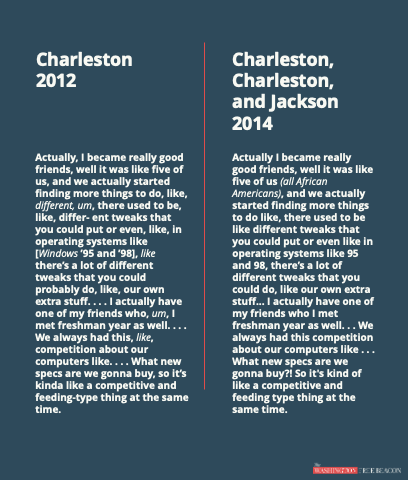
The Journal of Negro Education did not respond to a request for comment. Sherri Ann Charleston, LaVar Charleston, and Jerlando Jackson did not respond to requests for comment.

Monday's complaint, which was filed anonymously, comes as Harvard is facing questions about the integrity of its research affiliates and the ideology of its diversity bureaucrats, most of whom report to the sprawling office that Sherri Ann Charleston oversees.
The Dana-Farber Cancer Institute, one of Harvard Medical School's three teaching hospitals, announced in January that it would retract six papers and correct dozens more after some of its top executives were accused of data manipulation. That news came on the heels of a viral essay in which Carole Hooven, a Harvard biologist, described how she had been hounded out of a teaching role by her department's diversity committee after she said in an interview that there are only two sexes.
The school is also facing an ongoing congressional probe over its handling of anti-Semitism and its response to the plagiarism allegations against Gay, which Harvard initially sought to suppress with legal saber-rattling. Half of Gay's published work contained plagiarized material, ranging from single sentences to entire paragraphs, with some of the most severe lifts coming in her dissertation. Though Gay stepped down as president on January 2, she remains a tenured faculty member drawing a $900,000 annual salary.
Some of Charleston's offenses are similar to Gay's. In her 2009 dissertation, for example, Charleston borrows a sentence from Eric Arnesen's 1991 book Waterfront Workers of New Orleans: Race, Class, and Politics, 1863-1923, without quotation marks and without citing Arnesen's work in a footnote.
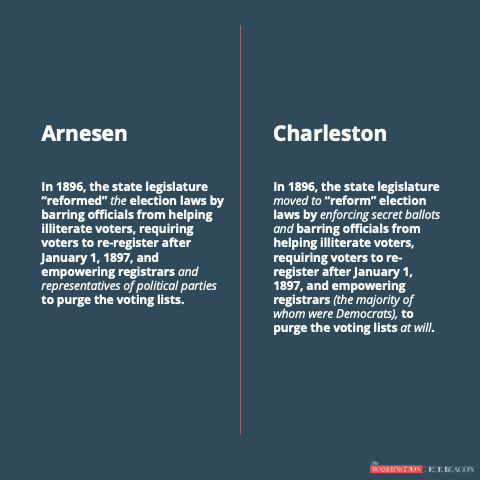
She also lifts full paragraphs from her thesis adviser, Rebecca Scott, while making minimal semantic tweaks.
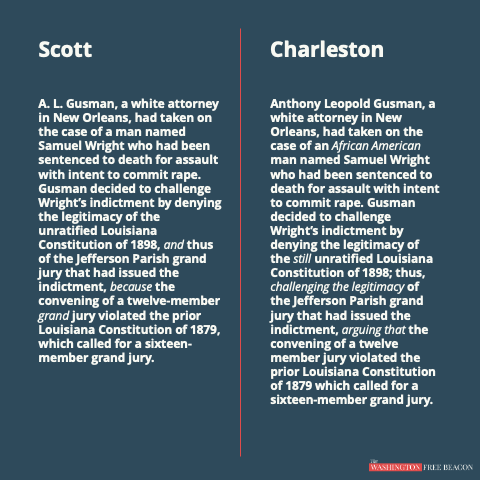
"There's simply not enough difference to consider them original words," said Jonathan Bailey, the founder of the website Plagiarism Today. "Though the sources in those examples are cited"—Charleston includes a footnote to Scott at the end of each passage—"the text either needed to be quoted or properly paraphrased."

Bailey added that the plagiarism of Scott alone merited an investigation—ideally, he said, "by a neutral party with no ties to either the school or the school's critics."
Harvard did not respond to a request for comment. Scott and Arnesen did not respond to requests for comment.
Charleston also lifted language from Louis Pérez, an historian at the University of North Carolina-Chapel Hill; Alejandro de la Fuente, an historian at Harvard; and Ada Ferrer, an historian at New York University, among other scholars.
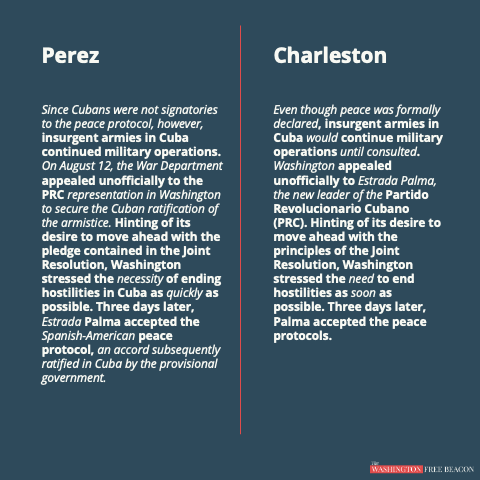
Charleston cites each source in a footnote but omits quotation marks around language copied verbatim. The omissions violate Harvard's Guide to Using Sources, a document produced for incoming students, which states that quotation marks are required when "you copy language word for word."
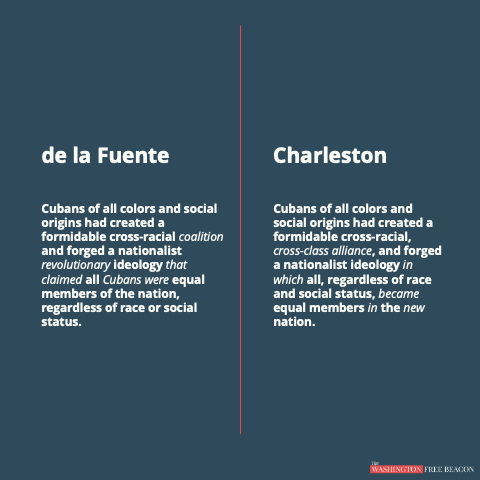
Pérez, de la Fuente, and Ferrer did not respond to requests for comment.

The range of examples presented in the complaint, which was also filed to the University of Michigan and the University of Wisconsin-Madison, highlights how plagiarism can shade into more severe forms of misconduct when it involves interviews or other data.
In fact, some experts said the term "plagiarism" didn't quite capture the dishonesty of duplicate publication, which is sometimes categorized as a separate offense and accounts for 14 percent of all paper retractions in the life sciences.
"You cannot just republish an old paper as if it is a new paper," Jussim, the Rutgers psychologist, said. "If you do, that is not exactly plagiarism; it's more like fraud."
Wood said the case was really a combination of the two offenses. "Because the second paper, on which Sherri Ann Charleston is one of the three co-authors, recycles so much of the text of the original paper by LaVar J. Charleston, this does have the earmarks of plagiarism, but the plagiarism is compounded by an even larger effort to deceive," he said. "The universities and journals need to investigate."
While scholars can reuse data across multiple papers, they must make clear when they are doing so and provide appropriate attribution to earlier studies, per guidelines from the Office of Research Integrity and the editorial policies of top academic journals, including Nature and Cell.
But the 2014 paper never indicates that it is reusing research from 2012. Instead, it claims to present new data that fill a "gap" in the literature and "corroborate" the 2012 study, among others, and on two occasions refers to survey subjects as "participants in this study."
Those participants appear to be the same people whom LaVar Charleston interviewed in 2012. Both surveys involved the same number of undergraduates, graduate students, Ph.D.s, and students at historically black colleges—all drawn from the same computer science conference—a similarity that experts said was a red flag.
"It is curious that the proportions are identical," said Debora Weber-Wulff, a German computer scientist who researches plagiarism and other forms of academic misconduct. "This would be grounds for the universities in question to request the data and investigate."
Jussim agreed. "This seems sufficiently improbable that, absent something saying they are re-reporting an already-published study, it would be fraud," he said.
LaVar Charleston did not respond to a request for comment about whether the two studies used the same interviews. The University of Michigan said it was "committed to fostering and upholding the highest ethical standards in research and scholarship," but declined to comment on the complaint. The University of Wisconsin-Madison told the Free Beacon it had "initiated an assessment in response to the allegations."
The main difference between the papers is a long section in the 2014 article about "culturally responsive pedagogy theory," which the authors say their findings support. Both articles are littered with the tropes of progressive scholarship, including a disclaimer about "positionality"—the authors assure readers that they reflected on their own "racial, gender, and socioeconomic status"—and a lament that computer science is a "White male-dominated field."
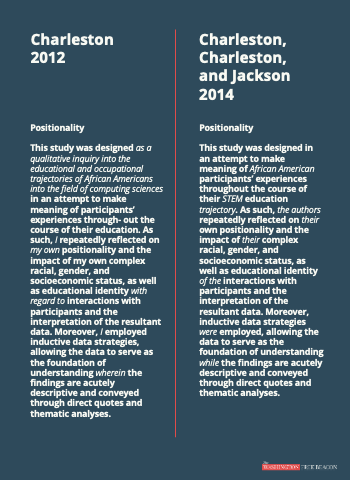
Both also criticize the idea that "computing sciences is for nerds, only for White people, [and] only for geniuses."
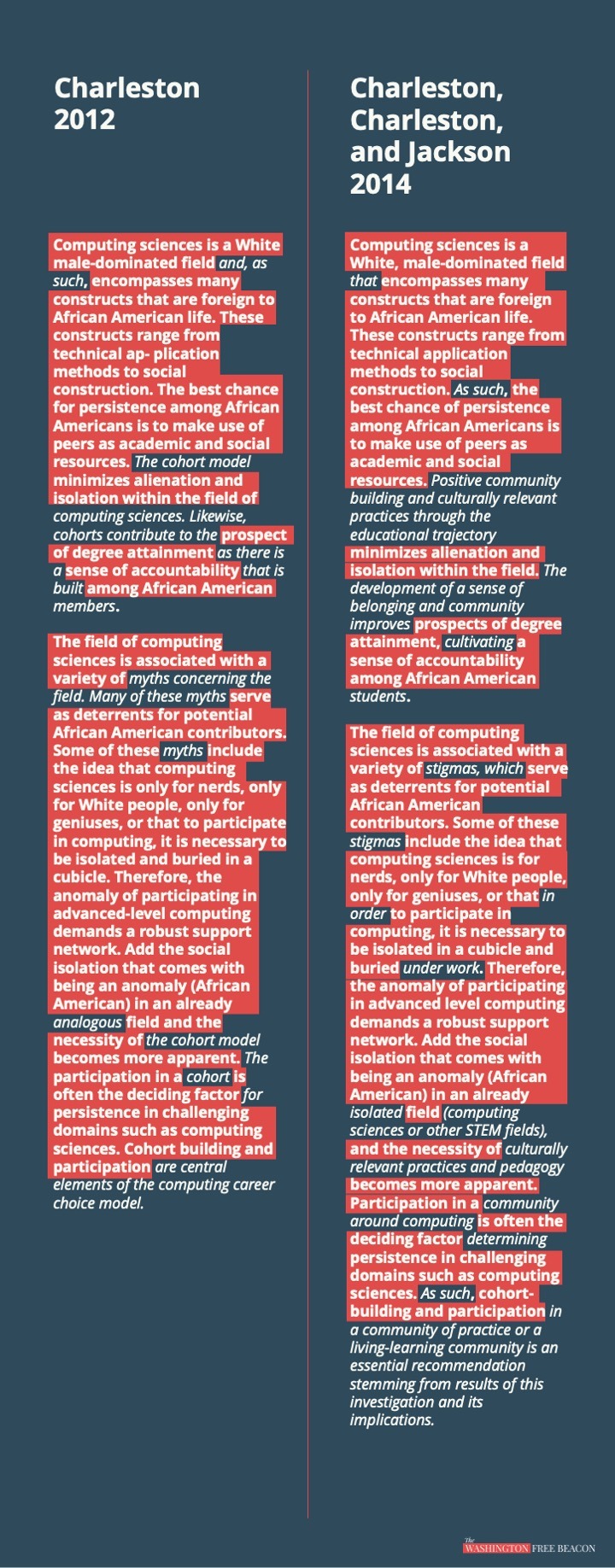
Such language is typical of the diversity initiatives Charleston oversees. Since 2020, her office has pumped out a stream of materials that bemoan the "weaponization of whiteness," discuss the ins and outs of "white fragility," and urge students to "call out" their peers for "harmful words." One message, signed by Charleston herself, was titled "A Call to Dismantle Intersecting Oppressions."
"We must continue to work against systematic oppression in all its forms—racism, sexism, homophobia, ableism, and more," she wrote.
Her office also curates resources for students seeking to become fluent in progressive patois, including a "glossary of diversity, inclusion and belonging (DIB) terms" that provides examples of "gaslighting."
Tactics can include "shooting down the target's ideas," the entry reads—or "taking credit for them."
==
Here we go again...
If you haven't already figured it out, the DEI-related faux-"disciplines" - the "Studies": Ethnic Studies, Women's Studies, Gender Studies, Postcolonial Studies, Media Studies, etc - are the most corrupt, the most ideological with the absolute lowest academic standards of all. All they care about is echoing back the "correct" opinions, not valid scholarship.
And yet, somehow these lunatics and fanatics end up the most powerful people in the asylum.
Harvard needs to fumigate the house, top to bottom.
#Aaron Sibarium#Sherri Ann Charleston#Claudine Gay#Harvard#Harvard University#academic corruption#DEI#DEI bureaucracy#diversity officer#chief diversity officer#diversity equity and inclusion#diversity#equity#inclusion#plagiarism#academic fraud
8 notes
·
View notes
Text
The Causal Potency of Consciousness
The other day I read The causal potency of consciousness in the physical world on the arXiv, by Danko Georgiev.
I know little about this author, other than that he has several other preprints on the arXiv on this and related subjects. His affiliation is listed as the Institute for Advanced Study in Varna, but on the Web site of that organization, he appears as the only author, so that appears to be a shell for him. Some of the papers listed there do have other authors in addition to Georgiev.
Georgiev also is the author of the textbook Quantum Information and Consciousness, published by CRC Press and available from Routledge.
And Georgiev is the chief editor of the online, open access journal Quanta (not to be confused with the online magazine Quanta!). Some of the authors published in the open access journal Quanta appear in other peer-reviewed journals of academic science (e.g. Stan Gudder).
Whatever. Georgiev is not a professor, nor is he an institutional researcher, and he appears to be near the fringe.
But he is not on the fringe, or beyond it.
Georgiev's paper presents ideas that I myself had a year or so ago, when I was regularly answering questions on Quora and used that as an excuse to do some amateur philosophizing. And these thoughts of mine go way back to my twenties, when I was trying to relate Chaitin's ideas about Kolmogorov complexity to self-consciousness.
The paper is written in a clear and accessible style and makes several arguments:
Consciousness must provide a selective advantage to conscious animals, including human beings. I had also made this argument, but I am not 100% sure the argument does not beg the question. After all, it might be objected that something physical both causes consciousness and provides a selective advantage.
Consciousness, as a quantum process, observes itself and this is a quantum measurement. I had also made this argument, but again, I am not 100% sure that the argument does not beg the question.
Consciousness has no causal potency from the standpoint of classical physics. I agree.
The quantum state of an organism is capable of indeterminate behavior, which in conscious organisms can be identified with free will, which is required for any satisfying theory of moral responsibility. I also had made this argument, and I went a bit further and pointed out that a free choice must appear random from the standpoint of classical physics, yet is rationally motivated from the standpoint of consciousness. In my view, this overcomes the objection that random behavior cannot be free.
I also have made the argument that human self-consciousness involves a fixed point that is not possible in classical physics, and may not be possible even in quantum physics.
And I have argued that quantum indeterminacy means the phenomenal world is not computable.
I am still not happy with the clarity and completeness of my arguments, and I am still working on them. But I do not doubt that they are all wound up with the points above.
Yet it is very nice to see that these ideas are circulating and may receive the attention and further research I think they deserve.
3 notes
·
View notes
Text
also:
www.jstor.org - tons of articles from academic journals as well as images, books, and primary sources
arxiv.org - academic articles (important disclaimer though, they're NOT always peer-reviewed - researchers will often upload papers here while waiting on review) in the fields of physics, mathematics, astronomy, computer science, statistics, quantitative biology, electrical engineering, systems science, and economics
Skip Google for Research
As Google has worked to overtake the internet, its search algorithm has not just gotten worse. It has been designed to prioritize advertisers and popular pages often times excluding pages and content that better matches your search terms
As a writer in need of information for my stories, I find this unacceptable. As a proponent of availability of information so the populace can actually educate itself, it is unforgivable.
Below is a concise list of useful research sites compiled by Edward Clark over on Facebook. I was familiar with some, but not all of these.
⁂
Google is so powerful that it “hides” other search systems from us. We just don’t know the existence of most of them. Meanwhile, there are still a huge number of excellent searchers in the world who specialize in books, science, other smart information. Keep a list of sites you never heard of.
www.refseek.com - Academic Resource Search. More than a billion sources: encyclopedia, monographies, magazines.
www.worldcat.org - a search for the contents of 20 thousand worldwide libraries. Find out where lies the nearest rare book you need.
https://link.springer.com - access to more than 10 million scientific documents: books, articles, research protocols.
www.bioline.org.br is a library of scientific bioscience journals published in developing countries.
http://repec.org - volunteers from 102 countries have collected almost 4 million publications on economics and related science.
www.science.gov is an American state search engine on 2200+ scientific sites. More than 200 million articles are indexed.
www.pdfdrive.com is the largest website for free download of books in PDF format. Claiming over 225 million names.
www.base-search.net is one of the most powerful researches on academic studies texts. More than 100 million scientific documents, 70% of them are free
301K notes
·
View notes
Text
National Institute of Technology—[NIT], Srinagar
National Institute of Technology (NIT), Srinagar is one of India’s premier autonomous public technical universities, situated in the picturesque valley of Srinagar, Jammu & Kashmir. Established in 1960 as one of the first eight Regional Engineering Colleges (RECs) in India, it was upgraded to NIT status in 2003 and declared an Institute of National Importance under the NIT Act of 2007.
NIT Srinagar has steadily grown to become a center of academic and research excellence in Northern India. It offers undergraduate, postgraduate, and doctoral programs across a range of engineering, science, and management disciplines.
Campus and Location
Located along the serene banks of Dal Lake and surrounded by the Himalayan ranges, the NIT Srinagar campus is undoubtedly one of the most beautiful in India. Spread over 100+ acres, the campus offers an inspiring environment for academic pursuits.
Despite facing climatic and geographical challenges, the institute has modern infrastructure including academic blocks, laboratories, a central library, hostels, faculty residences, health centers, and recreational facilities.
Academic Programs
NIT Srinagar offers programs at the undergraduate (B.Tech), postgraduate (M.Tech, M.Sc., MBA), and doctoral (Ph.D.) levels, across various disciplines.
Undergraduate Programs (B.Tech) – 4 years:
Computer Science and Engineering (CSE)
Electronics and Communication Engineering (ECE)
Electrical Engineering (EE)
Mechanical Engineering (ME)
Civil Engineering (CE)
Chemical Engineering
Metallurgical and Materials Engineering
Information Technology (IT)
Postgraduate Programs (M.Tech & M.Sc.) – 2 years:
M.Tech in Structural Engineering, Water Resources, Thermal Engineering, Signal Processing, Power Systems, and more
M.Sc. in Physics and Chemistry
MBA (introduced in recent years)
Ph.D. Programs:
Offered across all major departments, including Engineering, Physics, Chemistry, Mathematics, and Humanities.
Admissions Process
Admission into NIT Srinagar is competitive and based on national-level entrance exams:
B.Tech: JEE Main followed by centralized JoSAA/CSAB counselling
M.Tech: Through GATE and CCMT counselling
M.Sc.: Based on IIT-JAM
MBA: CAT/MAT/CMAT scores, followed by personal interviews
Ph.D.: Entrance exam conducted by NIT followed by interview
The institute follows the Government of India’s reservation policy for SC/ST/OBC/EWS/PwD categories.
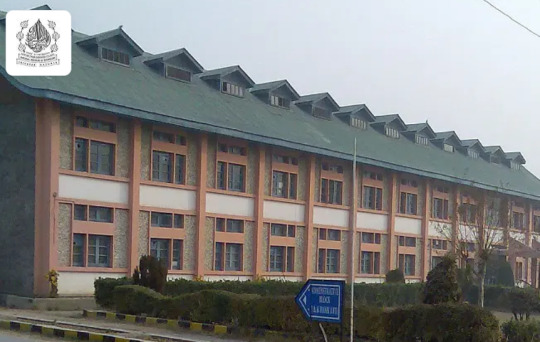
Infrastructure and Facilities
NIT Srinagar has built a robust infrastructure to support high-quality education, research, and student well-being.
Academic Infrastructure:
Smart classrooms with AV tools
High-speed internet and computing facilities
Department-specific laboratories (AI, Thermal, Civil, Nano-Materials, etc.)
A large Central Library with 70,000+ books, journals, and online databases (IEEE, Springer, etc.)
Residential and Support Facilities:
9+ hostels with mess, Wi-Fi, and recreation rooms
Health center with doctors and emergency care
Bank, post office, and campus shops
Sports grounds, gymnasium, and indoor games area
Canteens and cafes spread across campus
Efforts are constantly made to modernize infrastructure through funding from MHRD, World Bank (TEQIP), and HEFA.
Faculty and Research
NIT Srinagar has a team of experienced faculty members, many of whom hold Ph.D. degrees from premier institutions like IITs and foreign universities. The faculty is deeply engaged in teaching, research, and consultancy.
Research Strengths:
Renewable energy and solar tech
Structural engineering
Power systems and control
Materials and nanoscience
Data science and machine learning
Robotics and automation
Faculty and students regularly publish papers in peer-reviewed international journals, file patents, and participate in national/international conferences.
Innovation and Entrepreneurship
To promote a culture of innovation and entrepreneurship, NIT Srinagar supports:
Start-up incubation center (under MoE Innovation Cell)
Participation in Smart India Hackathon, Toycathon, and Ideathons
Technical student clubs for AI/ML, coding, robotics, and blockchain
Projects supported by DST, DRDO, AICTE, and ISRO
Several student-led projects have won accolades in national competitions and hackathons.
Placements and Internships
The Training and Placement Cell (TPC) plays a key role in bridging students with recruiters. The placement record has been consistently improving, especially in the CSE, ECE, and Mechanical departments.
Top Recruiters Include:
Amazon
TCS
Infosys
Wipro
IBM
L&T
Capgemini
DRDO
Indian Oil
Bharat Electronics
JSW Steel
Maruti Suzuki
Placement Highlights:
Highest Package: ₹22–25 LPA (offered to CSE students)
Average Package: ₹6–8 LPA (CSE/ECE)
Overall Placement Rate: 85–95% in core branches
Students also gain internships at IITs, DRDO, ISRO, and reputed private firms.
Student Life and Culture
Despite its remote location, NIT Srinagar has a vibrant and active campus culture. Students come from across India, creating a diverse and inclusive atmosphere.
Popular Events & Clubs:
Techvaganza – Annual tech fest
Sonzal – Cultural and literary festival
Sportiva – Annual sports meet
Photography Club, Coding Club, E-Cell, NSS, Music & Drama Club
These platforms promote creativity, leadership, and community involvement among students.
International Collaboration
NIT Srinagar is establishing global ties through MoUs with international universities, collaborative research, and student exchange programs. It also encourages students to pursue online international certifications, global internships, and industry exposure.
Challenges and Resilience
Given its geographical and political landscape, NIT Srinagar has occasionally faced operational challenges, especially during harsh winters or socio-political disturbances. However, the administration ensures academic continuity through online learning platforms, digital classrooms, and flexible calendars when required.
This resilience has only strengthened the spirit and adaptability of students and faculty alike.
Why Choose NIT Srinagar?
Institute of National Importance with government support
Strong academic curriculum with real-world orientation
Excellent placement opportunities, especially in CSE & ECE
Support for research, innovation, and start-ups
Cultural diversity and peaceful surroundings
Opportunities for national and global exposure
Scenic campus experience like no other in India
Conclusion
NIT Srinagar combines quality education, dedicated faculty, and a serene Himalayan setting to offer a unique learning experience. With increasing focus on research, placements, and holistic development, the institute is steadily climbing the ranks among India’s top engineering colleges.
#FutureEngineers#EngineeringJobs#JobReadySkills#CareerDevelopment#HireFromNIT#InternshipOpportunities#NITPlacements
1 note
·
View note
Text
CSIR NET June 2025: Dates, Application & Preparation Roadmap
The CSIR NET June 2025 cycle is here, and with the CSIR NET 2025 June exam date officially set for July 26, 27, and 28, 2025, there’s never been a better time to kick your preparation into high gear. Whether you’re aiming for the Junior Research Fellowship (JRF) or an Assistant Professorship, this prestigious exam can open doors to a fulfilling career in scientific research and higher education. In this comprehensive blog, we’ll walk you through everything you need to know about the CSIR NET exam June 2025—from key dates and eligibility criteria to application steps, exam pattern, and winning preparation strategies.
Mark These Key Dates
CSIR NET June Application Form 2025 Start Date: 3 June 2025
CSIR NET June Application Form Last Date: 23 June 2025
CSIR NET 2025 June Exam Date: 26–28 July 2025
Clear your schedule and set calendar reminders for these critical milestones. Missing the CSIR NET June 2025 exam date or application window can derail your plans, so plan well in advance.
Who Should Apply?
The CSIR NET exam June 2025 is designed for candidates with a strong foundation in five major science streams:
Chemical Sciences
Life Sciences
Mathematical Sciences
Physical Sciences
Earth, Atmospheric, Ocean & Planetary Sciences
If you hold (or are about to complete) a Master’s degree in any of these disciplines with at least 55% aggregate marks (50% for reserved categories), and you meet the age requirements (≤28 years for JRF, no age limit for Assistant Professor), you’re eligible to take this test.
Step-by-Step Application Process
Filling out the CSIR NET June Application Form 2025 is a fully online process on the NTA portal. Here’s how to ensure a smooth submission:
Visit the official NTA CSIR NET website at csirnet.nta.nic.in.
Register with a valid email and mobile number—an OTP will verify your contact details.
Complete the application form by entering personal details (name, date of birth, category) and academic information (degree, university, marks).
Select your subject carefully; once submitted, you cannot change your exam discipline.
Upload scanned documents—passport-size photo, signature, category certificate (if applicable)—as per the prescribed format and file size.
Pay the application fee online using UPI, credit/debit card, net banking, or e-wallet.
Download and print the confirmation page for your records and as proof of submission.
Pro Tip: Double-check every field before final submission—any incorrect or incomplete application will be outright rejected.
Understanding the Exam Pattern
Knowing the CSIR NET 2025 June exam date is crucial, but understanding the exam pattern will determine how effectively you prepare:
Mode: Computer-based Test (CBT)
Duration: 3 hours
Papers:
Paper I (General Aptitude): 50 questions, 100 marks
Paper II (Subject-Specific): 75 questions, 150 marks
Paper III (Subject-Specific): 75 questions, 150 marks
Marking Scheme: +2 for each correct answer; –0.5 for each wrong answer
Prepare a detailed study plan that mirrors this structure. Allocate more time to subject-specific papers, as they carry higher weight.
Crafting a Winning Preparation Strategy
Draft a Realistic Timetable: Break down your syllabus into weekly and monthly goals. Include revision and mock-test slots.
Prioritize Conceptual Clarity: Rote memorization has limited value in the CSIR NET. Strive to deeply understand fundamental principles to tackle application-based questions.
Use Standard Reference Materials: Stick to NTA-recommended textbooks and peer-reviewed journals to stay current with recent scientific developments.
Solve Previous Year Papers: Familiarize yourself with trends, question formats, and difficulty levels seen in earlier csir net june 2025 exam date cycles.
Take Regular Mock Tests: Simulate exam conditions, strictly adhering to time limits. After each test, analyze errors and revisit weak topics immediately.
Form Study Groups: Online forums or local peer groups can be invaluable for doubt-clearing and sharing resources.
Stay Healthy: Don’t underestimate the power of good sleep, balanced nutrition, and short breaks to maintain peak mental performance.
Day-Before and Exam-Day Tips
Verify Center Details: Know your exam center location and reporting time—plan to arrive at least 60 minutes early.
Carry Essentials Only: Admit card, valid photo ID, one passport-size photograph, and a transparent ballpoint pen. Electronic gadgets are prohibited.
Stay Calm and Confident: A well-rested mind enhances recall. Review high-yield notes but avoid last-minute cramming.
After the Exam: What’s Next?
Once you’ve completed your papers on July 28, 2025, focus on:
Analyzing Your Performance: Reflect on which sections felt strongest or weakest.
Planning Further Steps: If you clear the NET, you can apply for JRF or Assistant Professor Positions and prepare for interviews or fellowship placements.
Continuing Skill Development: Whether you qualify or not, consider writing research papers, attending workshops, or enrolling in short-term courses to boost your profile.
The CSIR NET June 2025 examination is a pivotal moment for anyone pursuing a research or teaching career in India’s science ecosystem. With the CSIR NET 2025 June exam date set for July 26–28, 2025, and the application window open from 3 June to 23 June 2025, now is the time to finalize your documents, refine your study plan, and commit to a disciplined preparation schedule. Follow the steps outlined above, stay updated via csirnet.nta.nic.in, and approach the exam with confidence. Your journey toward becoming a Junior Research Fellow or Assistant Professor starts here—best of luck!
0 notes
Text
🎓 Exploring Higher Education Opportunities at Sabaragamuwa University of Sri Lanka (SUSL)

Sabaragamuwa University of Sri Lanka (SUSL), nestled in the lush highlands of Belihuloya, is not just a place of higher education. it is a hub for innovation, sustainable development, and holistic student growth. Established in 1991, SUSL was initially aimed at expanding university access to underserved regions. Today, it has grown into one of the most respected and modern universities in the country.
🌍 A University with a Vision for Impact
What makes SUSL different is its vision to nurture globally competent, socially responsible, and environmentally conscious graduates. The university is not confined to tradition — it evolves constantly through cutting-edge research, interdisciplinary teaching methods, and international collaborations.
Rather than simply delivering lectures, SUSL emphasizes interactive, outcome-based learning that empowers students to solve real-world problems. Its education model blends local relevance with global standards.
🏫 Academic Structure: Bridging Innovation & Practicality
SUSL offers nine academic faculties, each delivering specialized and industry-aligned programs:
1.Faculty of Agricultural Sciences
Equipped with smart greenhouses and organic demonstration farms, this faculty promotes sustainable agriculture, biotechnology, and food security research.
2. Faculty of Applied Sciences
Offers degrees in sport sciences and management, applied chemistry, biosystems engineering, and environmental science by preparing students for careers in science, IT, and health sectors.
3. Faculty of Geomatics
The only dedicated Geomatics faculty in Sri Lanka. Trains professionals in GIS, remote sensing, and land surveying, with high employability in government and private sectors.
https://sab.ac.lk/sites/default/files/inline-images/2023-07/Geomatics-Training.jpg
4. Faculty of Technology
Focuses on engineering and biosystems technology, bridging academic knowledge with hands-on industrial practice.
5. Faculty of Medicine
A recent but robust addition offering community-based clinical learning, modern laboratories, and collaboration with nearby hospitals.
6. Faculty of Management Studies
Renowned for its entrepreneurship programs, tourism & hospitality management, and business analytics, fostering leaders for tomorrow’s industries.
7. Faculty of Social Sciences and Languages
Includes unique offerings in translation studies, economics, political science, and languages, with cultural immersion and linguistics labs.
8. Faculty of computing
The most newest faculty in Sabaragamuwa University of Sri Lanka by comprising three academic Departments such as Computing and Information Systems, Data Science, and Software Engineering
9. Faculty of Graduate Studies
Coordinates postgraduate programs and research across disciplines with local and global partners.
💡 Research & Knowledge Innovation
SUSL encourages a strong research culture among students and staff. The Center for Research and Knowledge Dissemination supports initiatives in climate resilience, food systems, rural development, and digital transformation.
Students often publish in peer-reviewed journals or present at international conferences, with funding and mentorship from the university. Emerging technologies like AI, bioinformatics, and sustainable engineering are focal areas of research.
🧭 A Scenic, Sustainable Campus Experience
The campus itself is an inspiring place to study. Surrounded by the Pambahinna hills, rivers, and forest reserves, SUSL creates a peaceful yet stimulating academic environment.
It has adopted eco-friendly infrastructure, with solar panels, green gardens, organic cafeterias, and water conservation systems. The university’s setting enables field-based learning, especially in agriculture, tourism, and environmental sciences.
🏃♂️ Life Beyond Classrooms
SUSL offers a vibrant student life with over 50 clubs and societies spanning sports, innovation, arts, culture, and leadership.
Sports facilities include football grounds, cricket pitches, gyms, and swimming pools.
The SUSL Hackathon and Business Start-Up Challenge are annual events that showcase student talent.
Cultural festivals like “Sabara Kokila Udanaya” and “Pirihibini Diyawara” reflect the university’s rich traditions and inclusiveness.
The university fosters a strong sense of community where students from different regions, cultures, and backgrounds live, learn, and grow together.
🌐 International Reach & Employability
SUSL has partnered with institutions from Germany, Australia, Japan, China, and regional universities through MoUs that promote student exchanges, joint degrees, and collaborative research.
Graduates of SUSL are employed in leading local and global companies, NGOs, the public sector, and academia. The Career Guidance Unit provides job fairs, CV clinics, mock interviews, and internship placements.
🧑🎓 Student Support & Services
The university offers a wide range of support services to ensure every student thrives:
Counseling and Well-being Center
Career Guidance and Entrepreneurship Cell
IT and Digital Literacy Labs
Modern Libraries with e-resources
Scholarship and Financial Aid Programs
Residential hostels with canteen and recreation facilities
These services make student life smooth and empowering, even for those coming from remote or underprivileged backgrounds.
📌 Conclusion:
SUSL is a Smart Investment in Your Future
Sabaragamuwa University is more than a place to study and it is a space to innovate, lead, and become part of a greater purpose. Whether you’re interested in smart farming, sustainable business, health sciences, or digital technologies, SUSL offers the knowledge, resources, and environment to help you flourish.
📖 Explore programs and admission details via the official SUSL website
1 note
·
View note
Text
Why You Require Daily Supplements: Benefits Backed by Science
In today's fast-paced world, our lifestyles often leave little room for optimal nutrition. The hustle of daily life, combined with processed foods and environmental stressors, can make it nearly impossible to get all essential nutrients from diet alone. At Vitaglow, we believe that supplements are not just a modern trend—they are a scientifically backed necessity for maintaining overall well-being. From improving eyesight to supporting fertility and enhancing nail health, supplements serve as the foundation for a healthier, more vibrant life. Bridging the Nutritional Gap Even the healthiest diet may fall short of delivering the full spectrum of vitamins and minerals your body needs. Various studies have shown that nutrient depletion in soil, food processing methods, and even cooking techniques strip essential nutrients from our meals. This creates a nutritional void that daily supplements can fill. The best multivitamins, especially those formulated by Vitaglow, offer a comprehensive solution to meet your daily dietary needs. They provide a balanced blend of vitamins, minerals, and antioxidants that help you function at your peak—mentally, physically, and emotionally. Multivitamins are essential for people with dietary restrictions, such as vegetarians, vegans, or those with food allergies. With a daily multivitamin, they can easily maintain optimal health without drastic dietary changes. Moreover, modern scientific research continues to validate the role of multivitamins in reducing the risk of chronic illnesses, improving energy levels, and enhancing immune function. Eye Health and Vision Support One of the most overlooked aspects of health in the digital age is vision care. We spend hours staring at screens—be it phones, computers, or TVs—leading to increased eye strain, dryness, and even long-term damage. This makes eye care supplements and vision supplements more critical than ever. At Vitaglow, we formulate our eye health products with scientifically backed scientifically backed ingredients, including lutein, zeaxanthin, Vitamin A, and zinc. These nutrients play a crucial role in protecting the eyes from harmful blue light and oxidative stress. Studies published in peer-reviewed journals have found that these nutrients can significantly reduce the risk of age-related macular degeneration and cataracts. For instance, the Age-Related Eye Disease Study (AREDS) demonstrated that high doses of specific vitamins and minerals could slow the progression of vision loss. Our vitamins for eyesight are crafted using these very formulations, ensuring you receive clinical-grade support for your eye health. Taking daily vision supplements also improves night vision, reduces glare, and helps maintain moisture levels in your eyes. This is not just beneficial for older adults; even younger individuals who spend a significant amount of time on digital devices can experience noticeable improvements.
Nail Health and Inner Beauty Healthy nails are better than just a cosmetic concern; they are a consideration of your internal health. Weak, brittle, or discolored nails often indicate nutritional deficiencies, especially in biotin, zinc, and B vitamins. At Vitaglow, we understand that beauty starts from within. Our nails multivitamins are designed to support the structural integrity and growth of your nails by delivering key nutrients that promote keratin production and overall cellular health. Scientific studies have demonstrated that biotin, a water-soluble B vitamin, plays a crucial role in strengthening nails and promoting faster nail growth. Additionally, minerals such as iron and magnesium contribute to the oxygenation of nail cells, ensuring their healthy growth and development. Our supplements are infused with these ingredients to not only improve nail texture and shine but also enhance your skin and hair as a bonus. A daily intake of our nail and multivitamin supplements can make a visible difference in as little as a matter of weeks. Users often report stronger, shinier, and less brittle nails after consistent use. This is not just a beauty enhancement—it's a repair of your body's natural health, driven by science and perfected by Vitaglow. Supporting Fertility and Reproductive Health Fertility is a sensitive and complex issue, influenced by numerous physiological factors, many of which are rooted in nutrition. A deficiency in critical nutrients like folic acid, Vitamin D, and zinc can adversely impact hormonal balance, egg quality, and sperm count. That's why we've developed a specialized line of fertility vitamins aimed at both men and women. Scientific research supports the use of specific vitamins in enhancing fertility. Folic acid is well-known for preventing congenital disabilities, but it also plays a vital role in ovulation and the development of healthy embryos.Vitaglow's fertility supplements are crafted to meet these specific needs, improving your chances of conception naturally and healthily. Our fertility vitamin formulations are not only grounded in the latest scientific evidence but also made with high-quality, bioavailable ingredients for maximum absorption and efficacy. Why Choose Vitaglow? With so many supplement brands flooding the market, you may wonder what sets Vitaglow apart. The answer lies in our commitment to quality, transparency, and science-backed formulations. Each of our products is developed through rigorous research and manufactured to the highest quality standards. We don't believe in one-size-fits-all; our specialized supplements—whether for vision, nail multivitamins, or fertility—are targeted, effective, and safe. We also prioritize ingredient integrity. Our supplements are complimentary of harmful additives, synthetic preservatives, and allergens. What you get is pure, potent, and proven nutrition in every capsule. Our mission at Vitaglow is not just to sell supplements but to become a trusted partner in your journey to better health. If you're ready to take control of your health, it's time to embrace the science and power of daily supplementation. Whether you're looking to improve your eyesight, support your fertility, or simply find the best multivitamin Supplement for everyday wellness, Vitaglow has got you covered—because your health deserves nothing less than the best.
0 notes
Text
How to Pursue a PhD in Chemistry: A Complete Guide
Pursuing a PhD in Chemistry is a major academic and professional milestone. Whether your goal is to contribute to cutting-edge research, enter academia, or advance in the pharmaceutical or chemical industries, a doctorate equips you with the skills and credibility to thrive. Here's a complete guide to help you understand the process from start to finish.

Understand What a PhD in Chemistry Entails
A PhD in Chemistry is a research-focused degree that typically takes 4–6 years to complete. It involves advanced coursework, comprehensive exams, and a major original research project culminating in a dissertation. Specializations can include:
Organic Chemistry
Inorganic Chemistry
Physical Chemistry
Analytical Chemistry
Biochemistry
Materials Science
Theoretical/Computational Chemistry
You will work under the guidance of a supervisor, contributing new knowledge to your field and publishing in peer-reviewed journals.
2. Meet the Basic Eligibility Criteria
Most PhD programs require:
A Master’s degree (M.Sc.) in Chemistry or a closely related field
Strong academic performance (typically a GPA of 3.0/4.0 or equivalent)
Letters of recommendation
Statement of purpose (SOP) outlining research interests
Research experience (preferred, but not always required)
Some universities may accept exceptional candidates with just a Bachelor’s degree, especially in the U.S.
3. Choose Your Area of Research Interest
Before applying, identify the area of chemistry you're most passionate about. This helps you:
Narrow down suitable programs
Find potential supervisors whose research aligns with your interests
Write a compelling SOP tailored to specific departments
Review recent papers, attend webinars, or speak with current PhD students to gain clarity.
4. Prepare for Entrance Exams
Depending on your location and target universities, you may need to take standardized tests:
GRE (Graduate Record Examination) – Required by some U.S. universities
TOEFL/IELTS – For non-native English speakers applying to international programs
CSIR-NET/GATE – Required for admission or funding in India
Check individual university requirements carefully.
5. Apply to the Right Universities
Shortlist institutions based on:
Research output
Faculty expertise
Funding opportunities
Lab facilities
Industry connections
Applications generally include academic transcripts, test scores, SOP, resume/CV, and letters of recommendation. Most deadlines fall between November and February for Fall admission.
6. Secure Funding
PhD programs often offer financial support through:
Teaching assistantships (TA)
Research assistantships (RA)
Fellowships or scholarships
Make sure to apply for external funding as well (e.g., UGC-NET JRF in India, NSF fellowships in the U.S., or DAAD in Germany).
7. Interview and Acceptance
Some programs may conduct interviews to assess your fit with the department and potential advisor. Be prepared to discuss:
Your academic background
Research interests
Long-term goals
Why you chose their program
Once accepted, you'll receive an offer letter outlining funding, expectations, and start date.
8. Begin the Program
Your PhD journey typically involves:
Coursework (1–2 years): Advanced classes in chemistry and research methods
Comprehensive exams: To assess your readiness for research
Research proposal: Defining the scope and methodology of your dissertation
Lab work: Intensive experiments, data collection, and analysis
Dissertation writing: Documenting your findings in a scholarly format
Defense: Presenting and defending your research before a committee
9. Career Opportunities After a PhD in Chemistry
With a PhD, you can pursue:
Academia (Postdoctoral research, Professorship)
R&D in pharmaceuticals, biotechnology, and materials science
Chemical manufacturing and process industries
Government or defense research labs
Scientific writing, patent law, or consulting
Final Tips:
Stay curious and resilient – research is a marathon, not a sprint.
Network with peers, attend conferences, and seek mentorship.
Keep publishing and updating your skills (e.g., in data analysis or AI in chemistry).
A PhD in Chemistry is demanding but deeply rewarding. With the right preparation and mindset, you can carve out a meaningful and impactful career.
0 notes
Text
01/07/24, 3:43 PM EST: At this time of day, I saw "the dress" as a white and gold dress that appeared to be in the "shade," (which to me gave the "white" part of the dress a "light bluish" tinge).
UPDATE 01/07/24, 4:50 PM EST: I had originally reblogged this post in the late afternoon. It is interesting that when I revisited this post later to add to it, it was in the early evening, so my blinds were closed and no more sunlight was coming in my window behind me to shine on my computer screen. Consequently, at first glance, the dress looked darker, with it almost being a very light blue (especially the photo on the Wikipedia link above), and a dark gold or mustard color. 🤔
For more information on what the colors of "the dress" actually are and why some people see the dress as "blue and black" and others as "white and gold," (and a few as "blue and brown" or "other), see below the cut.
Yes, the actual dress is blue and black, which I can clearly see in the photos below.


Both photos above are from BuzzFeed. Above left is a photo of the dress worn to a wedding by the mother of the bride (who started the whole thing when she took the original photo and showed it to the bride and groom before the wedding). Above right is a photo of the dress from the company it came from: Roman Originals.
Roman Originals (now just Roman) also has an image on its #THE DRESS That Broke the Internet website that fades from the blue & black to the white & gold dress, represented below by this (edited) gif:

Fun facts from the Roman's #THE DRESS website:
"The dress" is a viral meme that launched to stardom on 26th February 2015, when the world disagreed over whether the item of clothing below was black and blue or white and gold. The phenomenon revealed differences in human colour perception which have been the subject of ongoing scientific investigation in neuroscience and vision science, with a number of papers published in peer-reviewed science journals. In popular discourse, the disagreement over the colours was sometimes referred to as "dressgate". But to us it will always be our Dress that broke the internet. After 7.6 Million tweets it's time to seperate the fact from fiction
* 3,622,960 visitors to our website in 48 hours * 2,214,343 uses of #thedress * covered on over 150 networks including BBC Worldwide, Sky, CNN, Fox, ABC, CBS, Globo TV, NTN24, Nippon TV and more... * 70% of people asked actually saw white and gold instead of blue and black * 73 million views of #thedress across all social media channels * 34 minutes was the amount of time it took for our website to sell out of #thedress We even made a #WhiteandGold version that was auctioned off for Charity
It appears that some of the illusion might have been caused by "the dress" having been photographed with yellow-tinged lighting. According to Wikipedia:
Daniel Hardiman-McCartney of the College of Optometrists stated that the picture was ambiguous, suggesting that the illusion was caused by a strong yellow light shining onto the dress, and human perception of the colours of the dress and light source by comparing them with other colours and objects in the picture.[40] [...] The first large-scale scientific study on the dress was published in Current Biology three months after the image went viral. The study, which involved 1,400 respondents, found that 57 per cent saw the dress as blue and black, 30 per cent saw it as white and gold, 11 per cent saw it as blue and brown, and two per cent reported it as "other".[44] Women and older people disproportionately saw the dress as white and gold. The researchers further found that, if the dress was shown in artificial yellow-coloured lighting, almost all respondents saw the dress as black and blue, while they saw it as white and gold if the simulated lighting had a blue bias.[33][44][45][46] Another study in the Journal of Vision, by Pascal Wallisch, found that people who were early risers were more likely to think the dress was lit by natural light, perceiving it as white and gold, and that "night owls" saw the dress as blue and black.[47][48] A study carried out by Schlaffke et al. reported that individuals who saw the dress as white and gold showed increased activity in the frontal and parietal regions of the brain. These areas are thought to be critical in higher cognition activities such as top-down modulation in visual perception.[49][50] [emphasis added]
The yellow-tinged light hypothesis might account for why the dress seemed to change colors for me slightly from the time I first saw it with sunlight hitting my computer screen through the window behind me, to when I revisited it in the evening, when my blinds were closed.
I'm also an older woman, so I fit in the demographics of those most likely to see the dress as white and gold. However, I'm not a particularly "early riser" (although I do have to get up early for work🤷🏻♀️).
Optical illusions are always fascinating.
[edited]
In February 2015, the "The Dress" debate had everyone weighing in on what color it was.

12K notes
·
View notes